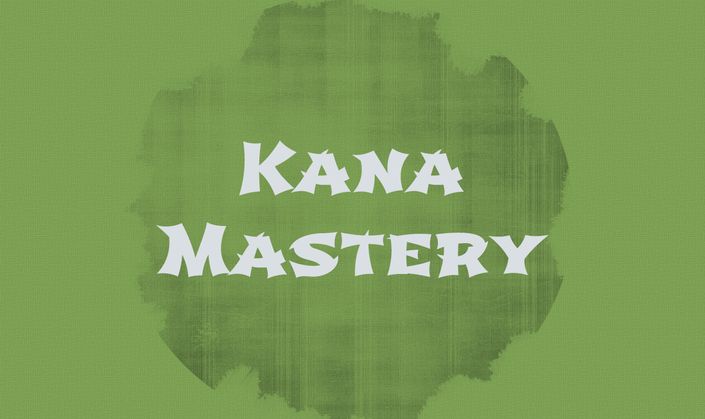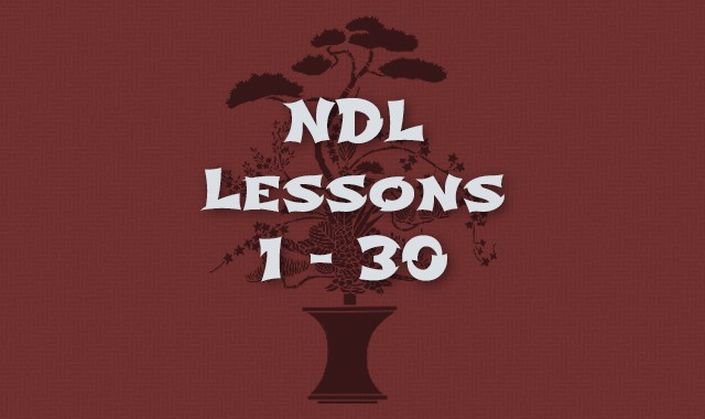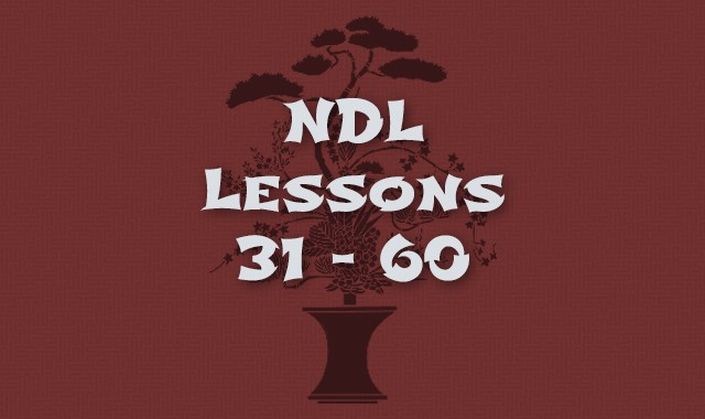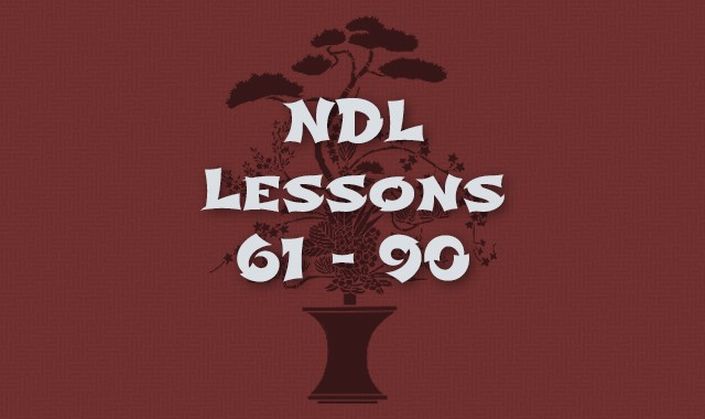
Toby in Tokyo
The Least Boring Japanese Course of All Time
Who's Toby?
The short answer? It’s this guy:
In this course, we follow Toby and a few of his friends as they enjoy a night out together.
As of now, this night out consists of 12 “Story Videos.”
Then we break down each story video in our 15 “Commentary Videos.”
And at the end of it all, you come out with some much-needed Japanese skills.
I’ll walk you through a quick example.
Here are 5 seconds of story dialogue:
Did you catch all of that?
If not, no worries, because we have:
An in-depth breakdown of each sentence:
This course is for people who:
- Don’t have time to study.
- Are tired of doing flashcards.
- Want to learn the flow of Japanese conversations.
- Are losing motivation.
- Are overwhelmed with resources and organizing studies.
How does the course help with all of these?
Why, I thought you’d never ask…

"Great job on the course. You guys absolutely crushed it.
I really gotta thank you. It's been a busy month, traveling around the states visiting family, preparing for our wedding next month, figuring out visa stuff for move back to Japan, etc.
Japanese studies have been absolutely stressful!
So, watching your videos has been the perfect diversion."
- A.J.
You have no time to study! Agh!
“Lately, since school has started, I've been having trouble spending any time dedicated to Japanese. It's been hard to stay motivated and not be lazy. Now, I feel like I have forgotten some stuff, and it's even harder to get back at it. Very frustrating. >_>”
…but hey, friend. It’s OK.
Let’s take a deep breath.
In 4 seconds. Hold 4 seconds. Out 4 seconds. Empty 4 seconds.
Rinse. Repeat. Realize that even with no time, there are still ways we can learn mucho takusan Japanese.
I can’t magically make you have more time to do the things you love, to wake up on your own schedule, to sit and sip coffee, swimming in new words, sounds, and sentences.
I can’t fix that, because there will always be 24,531 things fighting for your time.
Things likely swallowing up your time:
- Jobs.
- Meetings.
- Commuting.
- Laundry.
- Cleaning.
The Bad News: Most of us will never be able to eliminate all of those things. Unless you want to be a dirty naked farmer living all alone in the wilderness. Hey, to each his own.
The Good News: Vacuous B.S. about how you can “make time” if you get your priorities straight, you unorganized b%$#.
The Real News: The key is not magically uncovering a way to study 48 hours a week. The key is simply finding a way to study consistently without worrying about how to study, what to study, when to study.
You brush your teeth every day, right? But brushing your teeth—though a pain—is easy. You can do it without even thinking. Let’s make Japanese like that.
|
I created Toby in Tokyo with this kind of simplicity in mind. |
A course that you can pick up and study anytime without mental prep, organization, or stress.
Consider this, if you will:
Do this 1 thing to improve your Japanese:
Watch every video in this course—in order—twice.
Don’t fret when you don’t understand something. Don’t prepare a notebook or start doing flashcards or pick up a book. Instead, sit back, watch, and listen intently. This bears repeating:
Just. Watch. Each. Video. Twice.
When you do this, something weird will happen—you will be able to watch the “Story Videos” and understand the Japanese. You will be shocked at how much you understand.
Because casual Japanese conversations are not complicated IF someone explains them to you.
Watch 3 or 4 times, and I bet that you’ll be able to reproduce a lot of these Japanese sentences—the natural, conversational Japanese they don’t teach in schools.

"The thing I love about this course is it focuses on a lot of real life Japanese that is often left out of the textbooks.
It's got some excellent examples and explanations about how and why native speakers speak the way they do and how you can emulate it.
Definitely worth buying."
Alex from LearnJapanesePod.com
The Problem with Japanese Learning Resources
…is that they don’t teach natural Japanese.
This problem typically presents itself in one of these ways:
#1 – Courses divide language formality too rigidly.
Formality is important in Japanese—we get it.
But that’s not a reason to hide the potentially “rude” Japanese that native speakers use 90% of the time.
Toby in Tokyo focuses mostly on casual Japanese, but we have some formal Japanese in there, too. We even have some 尊敬語 (そんけいご // sonkeigo), “honorific Japanese.”
That’s because there’s a waitress in the story. And customer services employees use honorific Japanese:
Don’t worry. I break down exactly what is happening in that sentence grammatically… in the course.
#2 – “Casual Japanese” resources suck.
I’ve never seen a good, premium resource for learning casual Japanese in my entire life.
Say you’re reading a Japanese grammar book. They teach you a sentence like this:
私はピザを食べるのが好きです。
わたし は ピザ を たべる のが すき です。
watashi wa piza wo taberu no ga suki desu.
I like eating pizza.
Literally: “I + は + pizza + を + eat + のが + liked + です.”
Let’s imagine that we already went through the obstacle course of grammar functions needed to make that sentence.
After doing so, most Japanese courses will move onto the next lesson of equally stiff and formal Japanese.
But a select few will claim to teach you the “casual version” of the above sentence. And they will say that the casual version goes something like this:
私はピザを食べるのが好きだ。
わたし は ピザ を たべる のが すき だ。
watashi wa piza wo taberu no ga suki da.
I like eating pizza.
Literally: “I + は + pizza + を + eat + のが + liked + です.”
That sentence is so unnatural; I don’t know where to start.
In classes, I was taught that, to make a formal sentence casual, just change です (desu) to だ (da).
They should have rephrased that as:
“Niko, we think you’re an idiot. So teaching you this whack Japanese seems better than the pain of explaining casual options.”In my lessons, I would tell you the following about casual sentences:
- Don’t say 私 (watashi // I) in casual sentences. If you’re a girl, say あたし (atashi). If you’re a guy, say 俺 (ore) or 僕 (boku), the former of which is a little rough-sounding.
- Don’t use は (wa) at the beginning of sentences… sometimes…
- 90% of the time change のが (no ga) to only の (no) in casual sentences.
- Drop を (wo) whenever possible in casual sentences.
- Though we often put だ (da) after na-adjectives and nouns, you don’t need one after 好き (suki) here. It’s complicated.
Maybe you can see why books avoid casual Japanese? It hates rules.
So now we have a sentence like this:
あたしピザ食べるの好き。
あたし ピザ たべる の すき。
atashi piza taberu no suki.
I like eating pizza.
Literally: “I + pizza + eat + の + liked.”
Note: “I” is a female.
OK. We’re making progress. This is starting to sound a lot more like a natural Japanese sentence used in a casual conversation.
Except for one problem: The nuance is “I like the act of eating pizza.”
Which is weird to say in most situations. ← This is where a lot of resources will sacrifice natural Japanese just so that they can explain grammar constructions.
They don’t tell us that this sentence is unnatural!
So we look like idiots when we go around using their weird-o Japanese sentences for the next 3 years. (Yes, I’m speaking from experience. T_T)
Honestly, we could just say this:
あたしピザ好き。
あたし ピザ すき。
atashi piza suki.
I like eating pizza.
Literally: “I + pizza + liked.”
That’s a natural sentence. And it’s so simple!
3 words!
And if you were referring to someone’s question—i.e. if someone asked, “What kind of food do you like?”—then you wouldn’t need to say, “I.”
ピザ好き。
ピザ すき。
piza suki.
I like pizza.
Literally: “pizza + liked.”
2 Words!
This is casual Japanese.
It’s simple and borderline grammar-free.
|
Why is no one teaching this?! |
#3 – Explanations of grammar are convoluted and confusing.
I had one student that phrased this particularly well:
“I can make up some sentences but longer sentences tend to get me. Tenses are confusing as well.”This is your teacher’s fault—not yours.
If you look above at how much I had to break down that sentence above to make it natural, you might start to see what I mean.
Teachers are so focused on teaching “grammatically correct” Japanese that they overload our brains with particles, tenses, and just about anything else that can make us hate life.
But is a “grammatically correct” sentence correct if no one uses it in daily life?
I’d say no.
I’m not promising that this course will solve all of your long-sentence worries—though that is one of my long-term goals.
Instead, I’m only promising that I’ll never over-convolute Japanese grammar, treat you like an idiot, or encourage you to use unnatural sentences.
#4 – Fun resources aren’t all that useful.
I got an email from a student the other day. He said:
“I’ve watched countless anime, subbed and dubbed, but it’s all fantasy. So I have no real context of how Japanese conversation really flows/progresses.”I feel you, man.
|
Without courses like this one, the only way to get a feel for how Japanese conversations actually flow would be to go to Japan and make friends. |
Yeah, language exchange and lessons can help. But Japanese people have a bad habit of “helping” by dumbing down their language and saying really strange things.
I learned casual Japanese by watching my Japanese friends talk to each other.
But that would have been impossible at anything under a highly advanced level.
Not so in this course.
Check out this snippet of conversation:
We break down every single word of every sentence in that dialogue.
Show me any textbook that teaches casual Japanese jumping back and forth between four different speakers in a casual situation. Because if you can, I’ll definitely buy it. Then improve whatever they’re doing and add it to this course. ^_^
Help! I can’t remember Japanese words!
I hear this one all the time.
Spanish words? Hell yeah. French? Cake.
But then you go to learn Japanese words, and it’s like your brain is coated with Teflon—all that vocab just slides right off.
“Flashcards don’t do it for me.”“Books don’t do it for me.”
“Lessons don’t do it for me.”
“What am I doing wrong?!”
After years of studying, I’ve found that effortless memorization tends to depend on a number of factors, such as:
- High-context vocabulary.
- Bearable repetition.
I say “bearable,” because flashcards can kind of make you hate life sometimes.
Don’t get me wrong, we have flashcards.
Take this quick back-and-forth, for example:
We do have flashcards for that:
But we also have in-depth explanations:
And beneath the videos, you can read the sentences multiple times, with audio:
|
カナコ: |
ディエゴは完璧主義だからね。 |
|
ケンタ: |
そうなの?知らなかった。 |
And then we have audio loops that you can listen to while you go for walks, ride your bike, or drive to work:
You don’t have to think about how this works. All you have to do is look at it—not fretting about how much you’re retaining.
Trust me. If you go through the content, these words will stick.
Improve your listening skills.
“I can’t understand the full meaning of Japanese sentences, only random words, even though I know many more of the other words that are said—I just don't recognize them when listening.”Everything mentioned above about memorizing words has another massively important bonus: It improves listening.
I often get requests to slow down audio in my courses—like other Japanese courses do.
But there is one massive problem with that:
|
Slowed-down audio sounds different than native-speed sentences. |
You see this happen to Japanese students of English every day.
All of them can catch a sentence like: “How did your peanut butter taste?”
…if it’s read at textbook speed.
But almost nobody can catch the actual pronunciation, which is closer to: “Howjor peanuhbutter taste?”
This happens in Japanese, too, but in different ways.
Take this sentence, which is from Niko’s Daily Lesson #83:
(Note: Lessons #1-90 are included with Toby in Tokyo for free.)
東京に行ったことはありますか?
とうきょう に いった こと は ありますか?
toukyou ni itta koto wa arimasu ka?
Have you ever been to Tokyo?
Literally: “Tokyo + に + went + thing + は + there is + か?”
Note: I explain the formation of this sentence in Lesson #83—so let’s not worry about it for now.
Said at native speed, this sentence will be pronounced like this:
But many textbooks will say it like this:
Do you see the problem?
When speaking at native speed, if あ (a) follows another “ah” sound, then they will (to a non-native speaker) sound like a single sound.
So instead of “は (wa) + あ (a),” to me it sounds like は (wa) only.
But for many native speakers, it sounds like two separate sounds. So they dumb it down for us in textbooks:
As a result, many of us get overwhelmed when confronted with real Japanese spoken at normal speed:
It’s too fast!
Well, maybe. But if you listen to it again and again, it becomes much less overwhelming:
We do this for every line of dialogue in Toby in Tokyo and for every single sentence in our daily lessons.
Translation: We have audio loops for just under 1,500 Japanese sentences!
Listen to them—at the grocery store; on a walk through the park; on the train; everywhere!—and you will be able to pick up native-speed Japanese
Actually, we take it a step further.
Because a lot of the lessons will point out interesting pronunciation tips.
Take this line from the story, for example:
We break down these sounds bit-by-bit:
Can’t make full sentences in Japanese?
“My biggest challenge right now is putting all the bits I'm learning together into something usable. I know bits of grammar, vocab, kanji, and I'm decent with kana.... but when it comes to actually USING it for anything...no idea.”“I would say that my biggest problem is learning entire phrases, I don't have any trouble learning smaller phrases or individual words. I've nearly got all the kana (reading and writing) down as well, but longer phrases tend to be quite intimidating and I can't seem to remember them easily.”
“I find putting a dialogue together the toughest. I can learn individual words but how do I learn useful conversations?”
This is one I hear a lot from students.
The question, then, is, “Will this course teach me how to form my own full sentences?”
Yes—but it will take time. I’d say after going through the videos twice, you should have a high comprehension of the sentences. But to actually reproduce them on your own, I’d recommend going through all of the videos at least 4 or 5 times.I’m surprised by how well this works.
Honestly, I started building this course on a whim because I thought animated videos were cool.
Yeah, I’m a nerd.
But I noticed something interesting after a few weeks of working on this course: I remember ALL of it.
Not just the words and sentences.
I remember:
- The actual voices of the voice actors—their pitch and intonation.
- The artwork in the animation—the facial expression; the camera movement
|
Most importantly, I'm remembering how learning Japanese is fun. |
This is vital, because motivation to stick with a language is such a fragile thing.
How many times have you lost your motivation to study?
I get emails about this almost every day:
“My problem is getting motivated. I try to start but then I scare myself because it intimidates me. I have a calendar set for a daily reminder, but I still avoid it. I'm really going to try though.”“The #1 problem I am facing in learning Japanese is consistency. Of course, that's my fault, not the fault of any learning material. The problem is that sometimes I'll be really very super motivated and study for the whoolllleeee day..... And then I won't do anything else for two weeks... three weeks... two months...”
“I've lost my drive T_T. There was a point in my life I wanted to learn so bad, but I lost it somewhere. Not sure if I just got overwhelmed or just talked myself out of it (believing that I can't do it). I can learn all the vocabulary but how do I put it all together? I'm my own worst enemy.”
Reading messages like this tears me up.
I was there, too. Beating myself up for losing faith in my ability to learn this language.
Over and over again.
But I really, truly believe in my heart that anyone can learn Japanese. And anytime I feel burnt out or too tired to write a Japanese lesson or work on one of these courses, I go back and read messages like this one.
|
Let’s get one small victory together. |
If you haven’t yet, learn hiragana and katakana. This free course walks you through it.
Then let’s go through these videos together. You will learn every word in the videos. And you’ll see that learning Japanese is not about putting in 10,000 hours of studying, is not some impossible feat.
All we have to do is learn enough to enjoy the language more than we did yesterday.
You know the weirdest thing? I feel nostalgic about when I sucked at Japanese. At the time, I was so lost and overwhelmed. I had no confidence that I’d ever learn it. But I was excited about Japanese.
Sometimes, though, a gremlin in my head would try to take that away from me. Would tell me, “Don’t be excited, because you can’t learn this language.”
I let negative self-talk compromise my confidence, my happiness, and my progression in this language.
If this course can do anything, I want it to show you that you can make progress in Japanese, even just from a few hours of focused, guided studying.
Then hold onto that feeling, that boost of confidence.
I’m with you—even if you don’t enroll in this course.
Keep swimming.
30-Day Money Back Guarantee
No-Questions Asked

If you are not totally satisfied with this guide for any reason at all, then please email me within 30 days, and I will immediately send you a refund, no questions asked. (Well, if you're cool with it, after I send you your refund I might ask you why you weren't totally satisfied so that I can improve this guide even more.)
My number one goal is to help people learn Japanese. If I can make a living helping people learn Japanese, then that's really awesome, but I would never accept money from someone who didn't think that they were getting their money's worth.
I personally have wasted so much money trying to learn Japanese, and I don't want anyone to ever feel that way about any of my products. Tackling Japanese is a difficult mission. But I'm always here for questions, advice, motivation, or anything that can help you achieve your Japanese fluency goals.
Sincerely,
Niko
p.s. If you personally cannot afford to pay for this video course, then please contact me personally, and we can work something out. I would never want to deprive someone of the opportunity to learn.
Above all, my goal is to help people to master the Japanese language, and I want to help as many people as I can. If possible, I would like to be able to make a living at the same time, because then I could create educational content about Japanese full-time. However, sharing knowledge should always take priority over money, so please don't hesitate to reach out.
Course Curriculum
-
PreviewEpisode 1 - Meeting at the Station (2:04)
-
PreviewEpisode 2 - Toby Self Intro (0:28)
-
PreviewEpisode 3 - Diego Self Intro (0:45)
-
PreviewEpisode 4 - Miki Self Intro (1:03)
-
PreviewEpisode 5 - Ordering Drinks (0:56)
-
PreviewEpisode 6 - Strange Restaurant (0:50)
-
PreviewEpisode 7 - Introductions (1:05)
-
PreviewEpisode 8 - Kenta and Kanako (0:54)
-
PreviewEpisode 9 - Diego and Miki (0:47)
-
PreviewEpisode 10 - Toby and Manami (1:19)
-
PreviewEpisode 11 - Last Order (0:53)
-
PreviewEpisode 12 - Conbini (0:36)
-
PreviewEp. 1 Commentary - Meeting at the Station: Part 1 "First Phone Call" (11:49)
-
PreviewEp. 1 Commentary - Meeting at the Station: Part 2 "Sono Taoru" (16:30)
-
PreviewEp. 1 Commentary - Meeting at the Station: Part 3 "Gohan-Gohan" (10:39)
-
PreviewEp. 2 Commentary - Toby Self-Intro (10:57)
-
PreviewEp. 3 Commentary - Diego Self-Intro (16:05)
-
PreviewEp. 4 Commentary - Miki Self-Intro (23:34)
-
PreviewEp. 5 Commentary - Ordering Drinks (19:21)
-
PreviewEp. 6 Commentary - Strange Restaurant (17:55)
-
PreviewEp. 7 Commentary - Introductions (10:57)
-
PreviewEp. 8 Commentary - Kanako & Kenta (11:54)
-
PreviewEp. 9 Commentary - Diego & Miki (22:11)
-
PreviewEp. 10 Commentary - Toby & Manami (20:32)
-
PreviewEp. 11 Commentary - Last Order (9:52)
-
PreviewEp. 12 Commentary - Conbini (13:03)
Did I mention these free courses?
In addition to the Toby video course, you also get access to the following courses:
❉ Niko's Daily Lessons Premium Pack, #01-30 ($16)
❉ Niko's Daily Lessons Premium Pack, #31-60 ($16)
❉ Niko's Daily Lessons Premium Pack, #61-90 ($16)
❉ The Bunkai Beast Japanese Grammar Guide (Beta Invite Only)
In other words, you're getting:
✔ 90+ in-depth Japanese lessons.
✔ Flashcards and audio loops for over 1,200 sentences.
Plus, you'll get all future updates of the Bunkai Beast Grammar Guide, which I'm planning to make extremely lengthy, detailed, incredible, and so on. ^_^
All of that is included FREE with purchase of the Toby in Tokyo course.
For more info on these bundled courses, check out the links below.
Courses Included with Purchase





Your Instructor
Most of the content in our courses and lessons is written by Niko, language nerd extraordinaire. But his writing is checked and supplemented by native Japanese linguaphiles like Rei (his wife). He gets input and direction from Caleb (the NS tech ninja) and Chie (art/design leader). And sometimes he acts as a mere proofreader for talented bilingual guest writers. With our effort combined, we hope to make your move to Japanese fluency fast, efficient, and fun. ^_^

